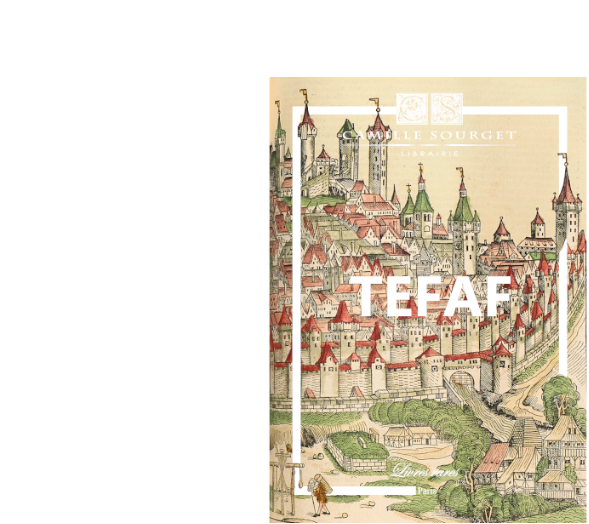This account that Chardin made of his travels received praise from Jean-Jacques Rousseau and Voltaire and became Montesquieu’s bedside book.
First complete edition, partially original, rare in this format, of Voyages de Chardin en Perse adorned with 78 fold-out plates,
bound in contemporary black morocco.
Amsterdam, 1711.
Chardin. Voyages de M. le chevalier Chardin, en Perse, et autres lieux de l’Orient…
Amsterdam, Jean Louis de Lorme, 1711.
3 volumes in quarto of: I/ 1 portrait-frontispiece, (4) leaves, 279 pages, 1 folding map, 17 plates outside the text including 9 fold-out; II/ 454 pages, 15 plates outside the text including 4 fold-out; III/ 254 pages, (13) leaves, 46 plates outside the text including 31 fold-out. Complete binding of the time in black morocco, spine with raised bands adorned with gilt florets, Du Seuil-style framing on the covers, gilt wheels on the soles, gilt edges. Some discreet restorations. Binding of the period.
252 x 189 mm.
First complete edition, partially original, rare in this format, of one of the best old descriptions of Persia. It is still today an invaluable source for understanding Persian culture and civilization at the end of the 17th century.
A portrait, a map, 78 plates (views, costumes, ancient writings, antiquities, etc.) and 6 folding tables outside the text.
“Chardin’s Journey to Persia is one of the most interesting travels published in the 18th century”. Brunet, I, 1802.
Son of a Protestant jeweler from Place Dauphine in Paris, Jean Chardin (1643-1713) quickly developed a strong taste for travel, where curiosity about foreign lands and the hope of lucrative trade were intermingled. He made two long stays in the Middle East. The first, from 1664 to 1670, saw him spend a long time in Isfahan, and named “merchant of the shah.” Upon his return, he published a relation of the Coronation of Soliman iii (1671). His second stay in the Middle East took place from 1671 to 1677. In 1686, he published in London the journal of his second trip to Isfahan (which Bayle highly praised), then, in 1711, a much more complete edition including, in addition to the same journal (forming volume i), a very detailed presentation of Persia (volume ii), a particular description of Isfahan and the account of a journey to Hormuz (volume iii).
“His official position, relationships with principal figures, and the knowledge he hastened to acquire of the country’s idioms allowed him to gather a wealth of information on the government, mores, antiquities, monuments, and history of Persia. A skilled draftsman, whom he had brought along, accompanied him in all his explorations, thus he could bring back exact reproductions of monuments, costumes, ruins of Persepolis, weapons, utensils…
It was claimed that the academician Charpentier had assisted Chardin in the writing of his book. In any case, what undoubtedly belongs to the illustrious traveler are these precious materials gathered with so much intelligence and courage, these deep researches, these observations, these curious and authentic pieces of information on the history, administration, legislation, mores, sciences, arts, customs of a country so to speak unknown until then.”
“The unanimous testimony of the travelers,” said Langlès, who, since Chardin, visited and described the same regions, only served to ascertain the accuracy, deepness of his observations, the variety of his knowledge and his veracity.”
The superb illustration, engraved on copper includes a first edition frontispiece portrait by Thomassin dated 1710 and 78 large plates, engravings or maps, most of them fold-out or double-page as well as 6 engraved headbands at the start of the chapters.
Chardin was accompanied by a draftsman, Grelot: all the views, scenes, and portraits were made after nature.
Precious copy of this rare quarto edition, preserved in its elegant period black morocco binding, the rarest condition for this journey.

